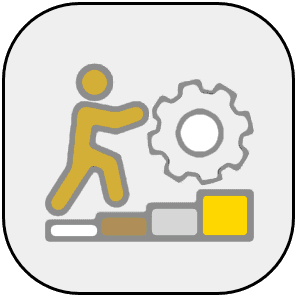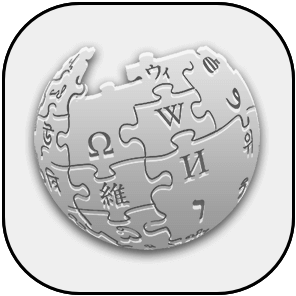Introduction

Any project normally has to be managed facing "Triple Constraints", the foundation of project management:
- TIME: The schedule for the project to reach completion. The time frame or the maximum time to deliver the project.
- SCOPE (QUALITY): The specifications of the project. The tasks required to fulfill the project's goals.
- COSTS (MONEY, BUDGET): The financial constraints of a project, also known as the project budget.
The project manager's job is to control these three aspects. To do that, he or she needs to apply management concepts, tools, knowledge, and techniques of project management. However, every project also involves a degree of risk. To complete a project successfully within the above given triple constraints, it is helpful to analyze and classify a project or a portfolio of projects. This can be done with the help of the NTCP Framework.
What is the NTCP Diamond Model? 4 Dimensions
The NTCP Model is a project risk assessment framework that classifies projects risk into 4 dimensions:
- N - Novelty
- T - Technology
- C - Complexity
- P - Pace
This project risk assessment model was coined by Shenahr and Dvir in 2004 (following earlier versions with only 2 and 3 dimensions). It is also know as the Diamond Model for Project Risk Assessment.
How to Apply the NTCP Model
The model consists of four axes on which the four dimensions are set out. If you score and plot any project(s) on the mentioned 4 risk dimensions in a graph with 4 axes and then connect the scores you get a sort of a "diamond". Each dimension has three to four levels in which projects can be classified. When a project is classified on the four axes, the connecting lines between the dimensions form a diamond-shaped figure. The further a project is classified outwards on the axes, the larger the diamond shape becomes. Large diamonds are more valuable, but have a higher risk of being stolen (Shenhar & Dvir, 2007). In other words, a project that is classified far outward on the axes offers more chances of high profits and great success, but also carries greater risks.
Classifying a Project on the 4 NTCP Dimensions
- Novelty: Novelty refers to market or target uncertainties. A project needs to be measured based on the organization's experience in handling such a project before. The project can be classified as:
- DERIVATIVE: End products are a derivative or improvement of previous products. This is the case if an existing product or process only needs small modifications like introducing new colors for a smartphone. These are low risk projects.
- PLATFORM: A new generation of an existing product line. Such a project needs research and analysis. Example can be a new major version of product, introduced to challenge competition and replacing existing products in the market.
- BREAKTHROUGH: The project involves an entirely new concept or idea which has never seen before. These are high risk projects because there is a lot of trial and error in the development process.
- Technology: Technology refers to method or task uncertainties. Shenhar and Dvir (2007) define Technology as "the knowledge, capacity and resources required to create, build or produce products, processes or services". This dimension describes the internal or task uncertainties of a project. It describes the uncertainty about the means to reach the final goal. Since these uncertainties are often in the technology used, this dimension is called Technology. However, this also includes uncertainty regarding team members' experiences and tight budget constraints. The project can be classified (based on the experience of the company in the technology to be used) as:
- LOW TECH: The project is using a routine, established technology. Low tech projects are generally not risky to deliver like construction work.
- MEDIUM TECH: To incorporate a new process that is not usually used in the organization with existing technology for the success of the project.
- HIGH TECH: The project is using a new, inexistent technology in a crucial area. The project is riskier and can lead to delay, exceeding budget and failure.
- Complexity: As the name suggests complexity is measuring the complications in a project. It depends upon the process, the product, or the kind of interactions between the components required in any project. Classification is as follows:
- ASSEMBLY: A single function project, carried out within a single organization. This is relatively straightforward and hence a low complexity project.
- SYSTEM: Projects that are more complex and have multiple functions for specific needs. These projects are carried out in collaboration with several organizations, each with its own function. The project(s) need to integrate subsystems that perform different functions. The risk is medium to high with this degree of complexity.
- ARRAY: Large, widespread collections of systems pursuing a common goal. These project(s) need to integrate several systems together for a common goal. These are highly complex and risky projects. Coordination and negotiation between the stakeholders are crucial for success.
- Pace: This dimension is about the time sensitivity and urgency to complete the project. Projects can be classified as:
- REGULAR: A project where reasonable time is available for execution. Time is not a critical parameter for the success of the project but it would be appreciated if it is delivered on time.
- FAST/COMPETITIVE: A project revolves around responding to a market opening, setting up a new product or strengthening the strategic position.
- TIME CRITICAL: Any delay with respect to the deadline will lead to the failure of the project.
- BLITZ: Project(s) is extremely critical and its success depends on the pace it is delivered. There are no deadlines, but the project must be executed in the shortest possible time frame. Situations like responses to a natural disaster or business crisis fall under this category.
Benefits of the NTCP Framework. Advantages
- Provides a clear insight / picture of the opportunities for profit and success, and the risks associated with a project (portfolio).
- Allows a uniform communication about project(s) risks.
- Provides a basis for the appropriate form of project management for each project.
- In addition to a general impression of the project, the NCTP model also provides detailed information per level on a dimension of how project management should deal with the project.
Sources:
Shenhar, A., Dvir, D., Lechler, T., & Poli, M. (2002), "One Size does not Fit All; True for Projects, True for Frameworks", PMI Research Conference (pp. 99-106), Project Management Institute, Seattle.
Shenhar, A. J., & Dvir, D. (2007), "Reinventing Project Management: The Diamond Approach to Successful Growth and Innovation", Harvard Business School, Boston.
Moscoso, P., & Ribera, J. (2013), "A Project Management Methodology". Harvard Business School Publishing.
|
Forum about the NTCP Diamond Model.
|
|
|
Courses about the NTCP Diamond Model.

Beginners Course
|

Advanced Course
|

Course for Experts
|
|
|
|
The best, top-rated topics about the NTCP Diamond Model. Here you will find the most valuable ideas and practical suggestions.
|
|
|
Advanced insights about the NTCP Diamond Model. Here you will find professional advices by experts.

Consultancy Tips
|

Teaching Tips
|

Practical Implementation Tips
|
|
|

|
Project Portfolio Management Benefits
In a paper titled "Project Portfolio Management in Turbulent Times" by Elizabeth Daniel, John Ward and Arnoud Franken (p...
|

|
Critical Success Factors of RM Improve your RM process
In E&Y's 2009 Risk Management Survey executives of large organizations highlighted 9 key factors for successful risk man...
|

|
Risk Mitigation Framework Project Risk Minimization
Risk mitigation techniques provide organizations with a formal and methodogical way to identify, analyse and minimize bu...
|

|
The Levels of Risk Risk Hierarchy
The following hierarchy describes risks types from global down to project level:
1. World system risks: political condi...
|
|
|
|
Various sources of information regarding the NTCP Diamond Model. Here you will find powerpoints, videos, news, etc. to use in your own lectures and workshops.

|
The Risk Management Process in Steps Risk Management Steps, Strategic Risk Management, Process of Risk Management
This presentation elaborates on the risk management process, including some important steps in this process. The present...
|

|
Example Risk Register Risk Management
List of 30 typical risk categories.
Risk category, description, consequences....
|

|
Project Communication Management Project Communications Plan, Project Management, Project Communication Plan, Project Stakeholder Analysis
This presentation is about communication, specifically focusing on communciation during projects. The presentation inclu...
|

|
Introduction to Project Risk Management Understanding the Importance of Project Risk Management
Project Management is Risk Management. From maintaining the customer relationship to protecting the critical path. The c...
|
|
|
|
Useful tools regarding the NTCP Diamond Model.

News
|

Videos
|

Presentations
|
| |

Books
|

Academic
|

More
|
|
|
|
Compare with: DICE Framework | Strategic Risk Management | Project Planning Matrix | PMBOK
|
|
|


